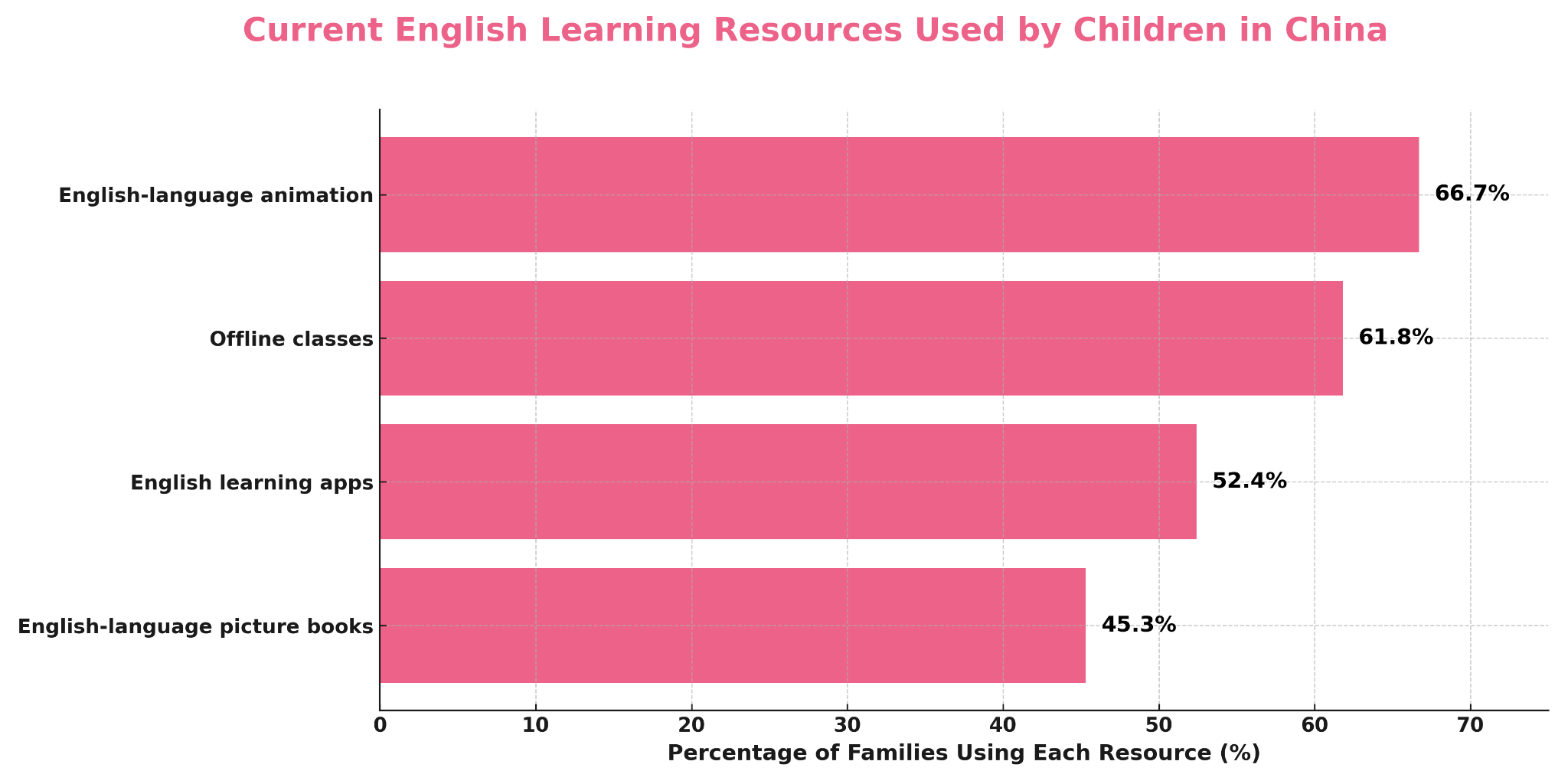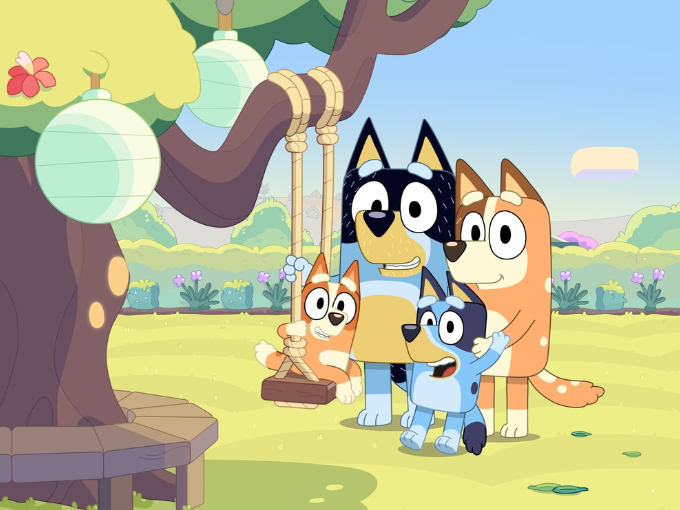To help kids learn English, young parents in China are increasingly turning to animation instead of more traditional educational tools.
This was among the top takeaways from a new report published this month by Chinese streaming platform Bilibili, drawing data from a February survey it conducted in 2,000 households. The respondents were all parents of preschool kids—there were roughly 52 million three- to six-year-olds in China as of last year—with the majority (85%) born after 1990 and classified as Gen Z.
According to the study, 66.7% of parents say they’re “actively” using animated series as part of their child’s everyday English learning. This is more than offline tutoring institutions (61.8%) and other resources like learning apps (52.4%) and books (45.3%).
Yuki Feng, Bilibili’s producer of kids content, tells Kidscreen that this is part of a cultural transition from China’s Millennials—who were raised in a more conventional, test-driven education system and tend to prefer kids content with clear educational goals—being the dominant parent group. “In contrast, Gen Z parents are digital natives raised in a more open and diverse environment, [so they] are drawn to content that is fun, relatable and sparks [co-viewing] with their children,” she says.

(Photo courtesy of bilibili)
To get a fair picture, the study represented different “tiers” of cities equally in the sample. This unofficial ranking system in China categorizes cities under one of six tiers, depending on factors like average income level, infrastructure and business opportunities, with the first tier encompassing the biggest and most influential cities, like Beijing and Shanghai.
Feng notes that families in third-tier cities reported the highest rates (72%) of animation-focused English learning, likely due to limited access to other educational options. While survey respondents were not asked to name specific shows, Feng says that Peppa Pig and PAW Patrol are generally seen as the most trusted English-language kids shows in Chinese households (and external platform data backs this up).
While Bluey‘s total views across Chinese platforms are not as huge as Peppa Pig‘s (150 billion views) and PAW Patrol‘s (80 billion) yet, Feng says there has been a sharp rise in regional interest in the Australian series since 2023, driven by its appeal to China’s Gen-Z parents.
“On some platforms, [Bluey] maintains a long-standing user rating of 9.9 out of 10, and has inspired active community discussion,” Feng explains. “Bluey-related content has surpassed one billion views on short video platforms like Douyin (a Chinese equivalent to TikTok), and much of it is created and shared by parents or parenting influencers. Many Chinese families now incorporate Bluey [into] their child’s early English exposure, using the original audio to introduce natural language and authentic expression.”
The survey found that iQIYI (58.4%) was the most popular platform used by children, followed by Youku (50.7%), Tencent Video (44.9%), Bilibili (22.8%) and Mango TV (22.4%). When it comes to kids viewership in China, these streamers are largely outperforming linear TV (38.7%), so Feng says that more platforms in the region are modernizing their kids & family content strategies.
“As Gen-Z parents increasingly value edutainment, character-driven storytelling and emotional resonance, English-language content with these attributes has naturally become a key focus for many platforms,” Feng says. But she also notes that “current import approval and content censorship policies” mean only a limited number of international programs reach Chinese viewers each year.
Ultimately, Feng believes that an increase in international co-production may be beneficial for the regional kids mediascape. “It offers a way to navigate content import limitations while fostering creative collaboration between Chinese and international partners—whether through internationalizing Chinese IPs, localizing global IPs, or co-developing entirely new properties.”
Featured image credit: Ludo Studio

























